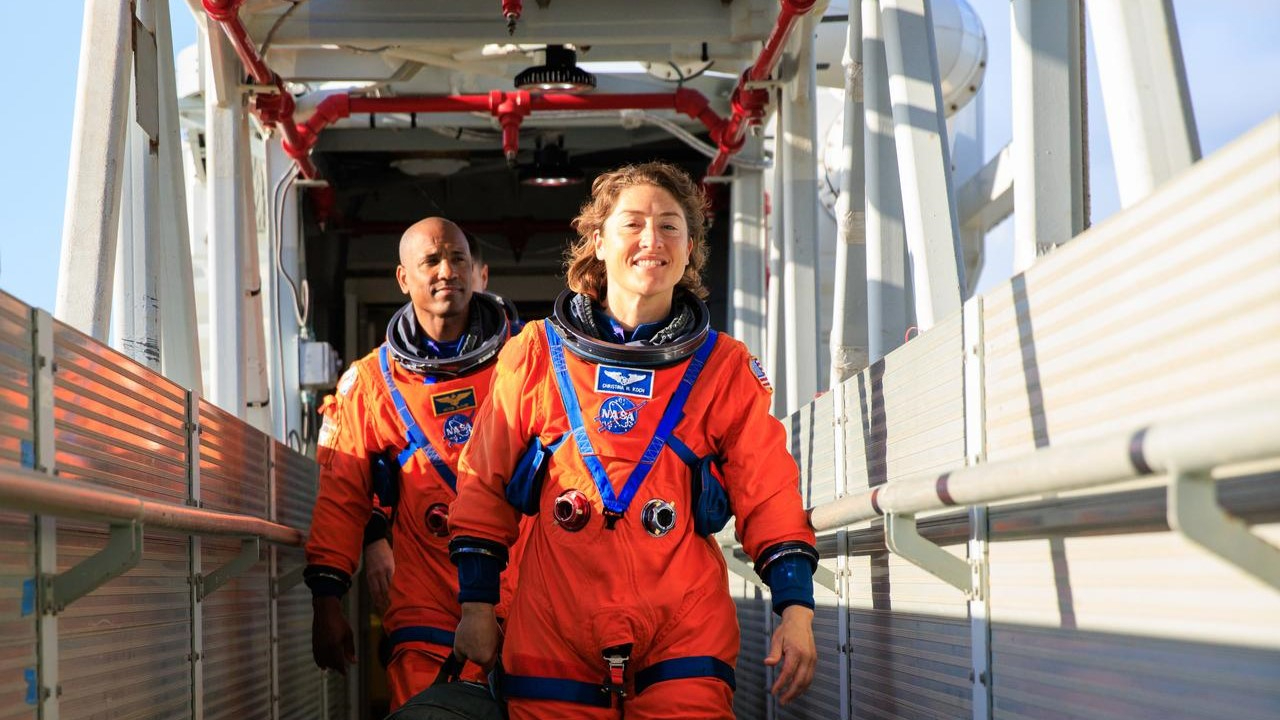
I'm used to seeing old moon spacecraft surrounded by museum crowds. So it was rather strange in August to not only visit the Artemis 2 lunar spacecraft under construction in Florida, but to speak with its four-astronaut crew standing nearby.
NASA invited a small group of reporters Aug. 8 to see three Orion spacecraft for future Artemis moon missions, including Artemis 2, at the agency's Kennedy Space Center (KSC) in Florida. Artemis 2 aims to circle the moon in late 2024, or perhaps 2025 if recent reported comments from NASA astronaut Randy Bresnik come to be. (Bresnik is assistant to NASA's chief astronaut and is responsible for developing and testing Artemis hardware, his official biography states.)
As the first human moon mission since the Apollo 17 landing in 1972, the Artemis 2 crew told us how seriously they are taking the responsibility of prepping for their mission, and for laying the foundation for future moon crews.. "This is a developmental mission," NASA mission specialist Christina Koch told reporters at KSC Aug. 8. "We are going to not only be training, [but] we're going to be figuring things out with the team as we go. And we have to really embrace the uncertainty."
Senior managers at NASA and the Canadian Space Agency (CSA), which has an astronaut aboard Artemis 2, echoed these themes in interviews with Space.com in December. That's because Artemis 2 is the first human mission of NASA's greater Artemis program, which aims to land people on the moon on the following mission, Artemis 3. (The official timeline says Artemis 3 will touch down no later than 2026, but given delays in developing the SpaceX Starship lander and crew spacesuits, NASA's Government Accountability Office suggests 2027 is more realistic.)
Related: This Artemis 2 tour showed me the 'Canadian genius' aiding NASA's next moon mission
The Artemis program was first announced in 2019 under the Trump administration. At the time, NASA was planning on a human lunar landing in 2028, but then-Vice President Mike Pence told the National Space Council that the deadline had to be 2024. Pence said the United States was in a new "space race" with China and Russia, and, as such, "the rules and values of space" would be determined "by those who have the courage to get there [to the moon] first and the commitment to stay."
Big space projects, however, tend to go late and over budget due to development issues, and as such, Artemis 2 commander Reid Wiseman emphasized safety will come before any deadline. "When NASA says it's ready to go fly, we will be prepared to go fly it," the agency astronaut told Space.com of Artemis 2 in an exclusive interview on Dec. 18, 2023.
The gate-opening uncrewed Artemis 1 mission had its own delays before launch on Nov. 16, 2022, for example, in part due to months of hiccups in getting the powerful Space Launch System (SLS) rocket fully fueled in tests before its debut launch. That said, Artemis 1's circuit around the moon and home again went just about flawlessly, enough to give NASA the confidence to announce the first Artemis human crew less than five months later, on April 3, 2023.
NASA has implemented many "lessons learned" from Artemis 1, including changes to the mobile launch tower design to reduce damage during liftoffs of the powerful SLS. Matt Ramsey, NASA mission manager for Artemis 2, also pointed to an upgrade in the data system for the new mission. "It was a chore," he said, to send out live video from Artemis 1 to viewers due to the small data capacity on the mission's Orion spacecraft.
"We'll have a lot more video that we'll want with the crew," Ramsey said. "While you've got to maintain their privacy, certainly there are times when the crew will be interfacing with each other and interfacing with the public, and we want to make sure that video has high priority." (Priority refers to requests to NASA's Deep Space Network, a trio of huge radio telescopes on Earth that the agency uses to communicate with its many space probes.)
Related: Artemis 2 moon astronaut says crew is ready for ambitious 2024 mission
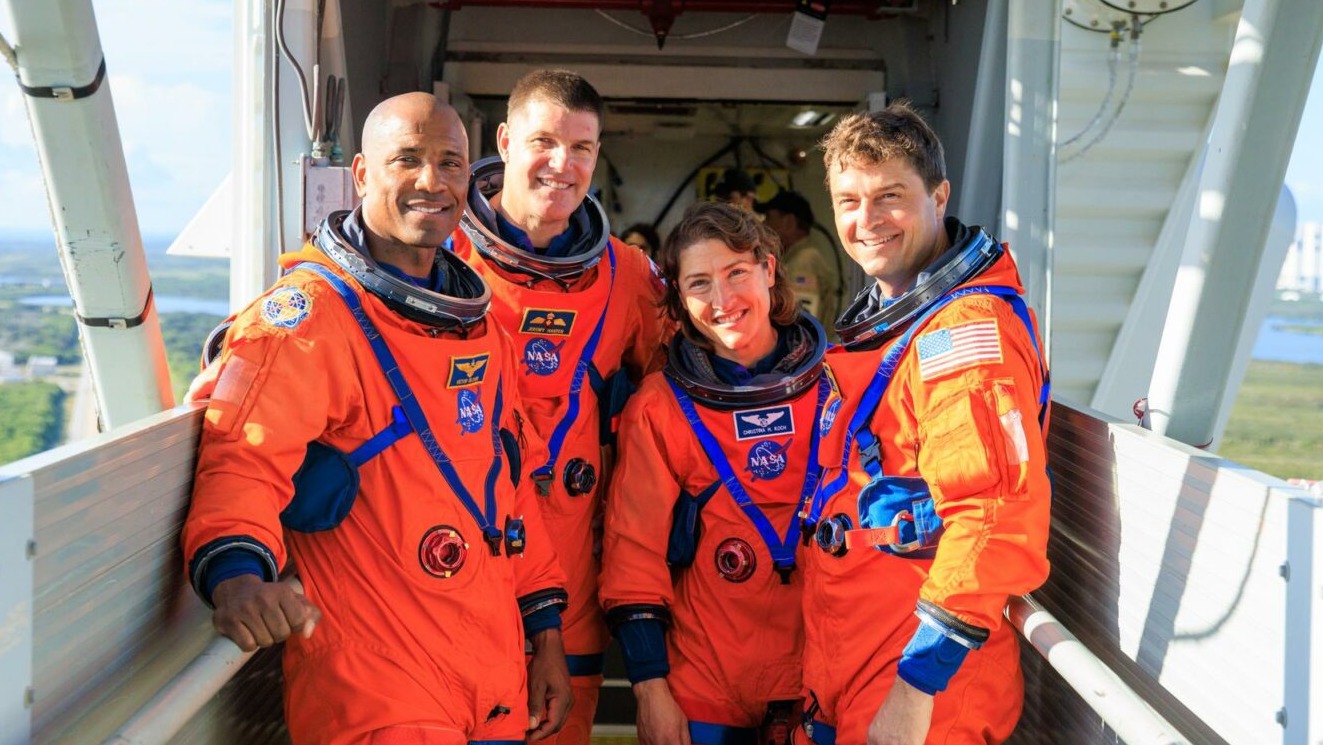
The Artemis 2 crew includes Wiseman, NASA pilot Victor Glover (who will be the first person of color to leave low Earth orbit), Koch (the first woman) and CSA astronaut Jeremy Hansen (the first non-American). The international composition of the crew reflects the approach of the U.S.-led Artemis Accords, a set of international agreements that spreads out costs of moon exploration among participating nations while also providing policy guidance to these partners. To date, more than 30 nations have signed on the Accords.
Some of the international partners working with NASA on the Artemis program have made promises for future hardware, in exchange for seats and science. The CSA, for example, will furnish a next-generation Canadarm3 robotic arm for NASA's future Gateway space station that will circle the moon later this decade to support human landings. Gateway will also include modules from the European Space Agency and the Japan Aerospace Exploration Agency, earning those partners seats on future Artemis missions.
The U.S. isn't the only nation building a coalition to explore and help settle the moon. China is leading its own effort, called the International Lunar Research Station, with partners such as Russia, Pakistan and Belarus. (China is not a partner in the International Space Station program, but Russia is; the ISS collaboration is one of the only Russian space partnerships that hasn't fallen apart in the wake of the nation's ongoing invasion of Ukraine, which began in February 2022.)
Related: Artemis 4 and Artemis 5 moon missions will include European astronauts (exclusive interview)
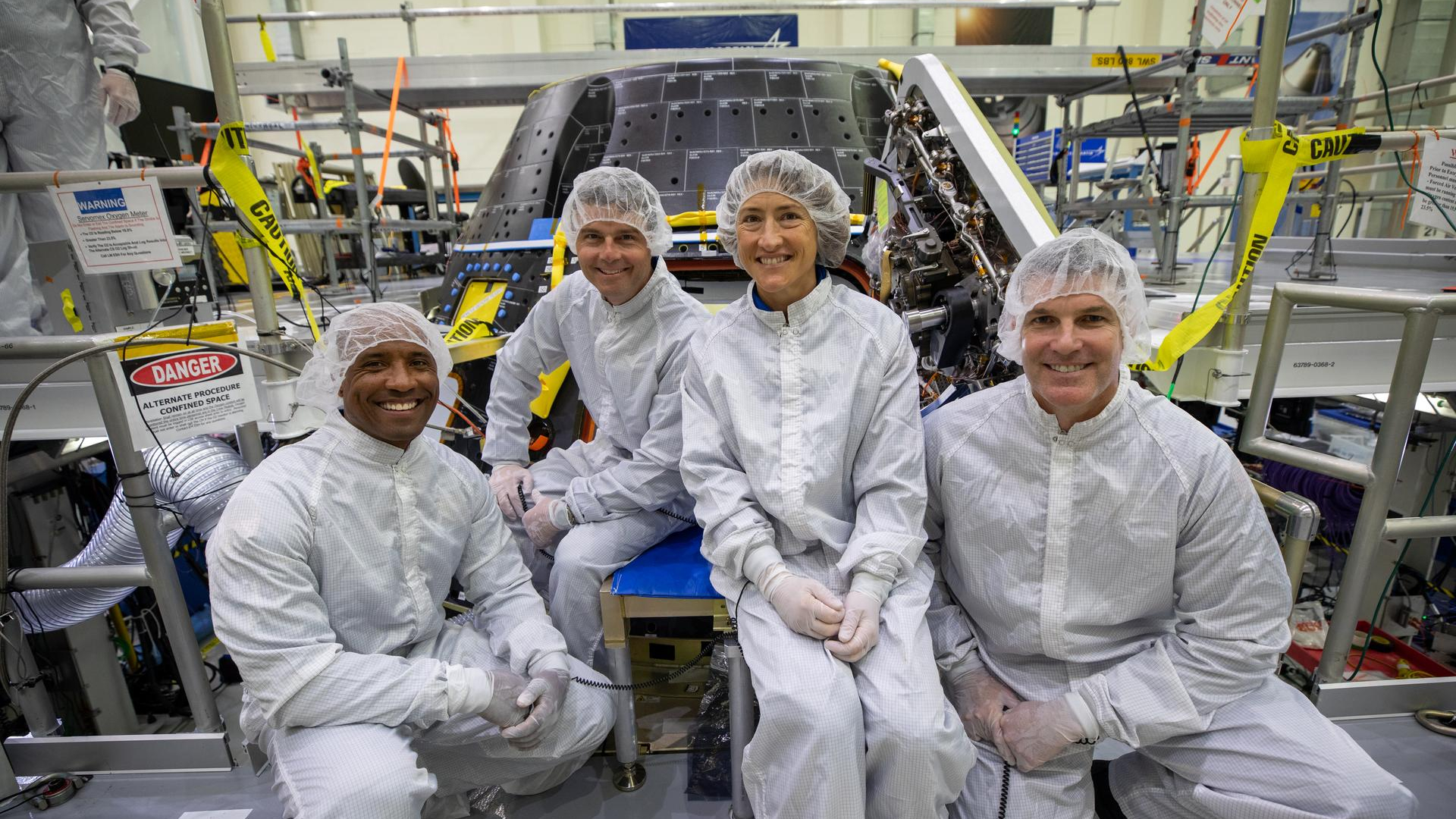
Artemis 2 will not be a landing mission; rather, it will send the four crewmembers around the moon and back to Earth. Ramsey said this strategy is required to test out the performance of the Orion spacecraft in progressively higher and higher Earth orbits, with crew on board, before authorizing them to go to the moon. Orion will be carrying astronauts and a life support system for the first time on Artemis 2, which is why NASA is taking this cautious, staged approach instead of a direct flight to lunar orbit like we saw on Artemis 1.
The Artemis 2 crew is also practicing other procedures new to the program, including emergency egress systems in case there's a problem shortly before launch; the inherent risk of using this system's wire-suspended sliding baskets, however, means the escape route is done as a tabletop exercise. The crew also practiced a launch day walkout in September, allowing them to discuss matters such as who carries what items to the spacecraft and how to best work with the ground teams.
Also ongoing is Orion systems training and the readying of the spacecraft simulator for future missions, based on the feedback from the crew. Wiseman, Glover and Hansen are all military pilots who between them have thousands of hours of flying experience, while Koch was a researcher in Antarctica in an "isolated, confined environment" similar to what NASA wants astronauts to practice ahead of spaceflight.
Additionally, all the crew has flown long-duration ISS missions before with the exception of Hansen, who has many years of senior NASA management experience but has yet to launch to space in the 15 years since his selection. Hansen has waited so long because the CSA has only occasional flight opportunities on the ISS due to funding just 2.3% of the collaboration. (The proportion of funding a space agency provides to the ISS partnership is directly related to the proportion of astronaut seats it gets on the orbiting lab.).
"For me, it's a little bit hard to believe," Hansen told Space.com of his assignment in an in-person exclusive, hours after his assignment to Artemis 2 in Houston, but he emphasized there was a reason Canada was brought on board, given all the space robotics experience it has to offer. "It's not as a gift, but because we bring real value."
Recovery exercises with the Artemis 2 crewmembers and their backups are also planned in 2024. Only one individual has been named as a backup astronaut so far — the CSA's Jenni Gibbons, backing up Hansen — but NASA will name its backups in the coming months. The CSA's Edward Tabarah, head of the Canadian astronaut corps, noted that it is possible NASA and CSA will use all the backup astronauts for future moon missions, given that each individual will be ready to step on board Artemis 2 if required.
"They get all that training to be ready," Tabarah told Space.com. Gibbons will have operational tasks with Artemis 2 if she stays home, however, including serving as capcom (capsule communicator) with the mission and helping Hansen with public outreach. She also may act as the family liaison for Hansen, as all astronauts on a space mission have an individual in their home astronaut corps helping their families.
Related: Canada assigns astronauts to launch on Boeing's Starliner, back up Artemis 2 moon mission
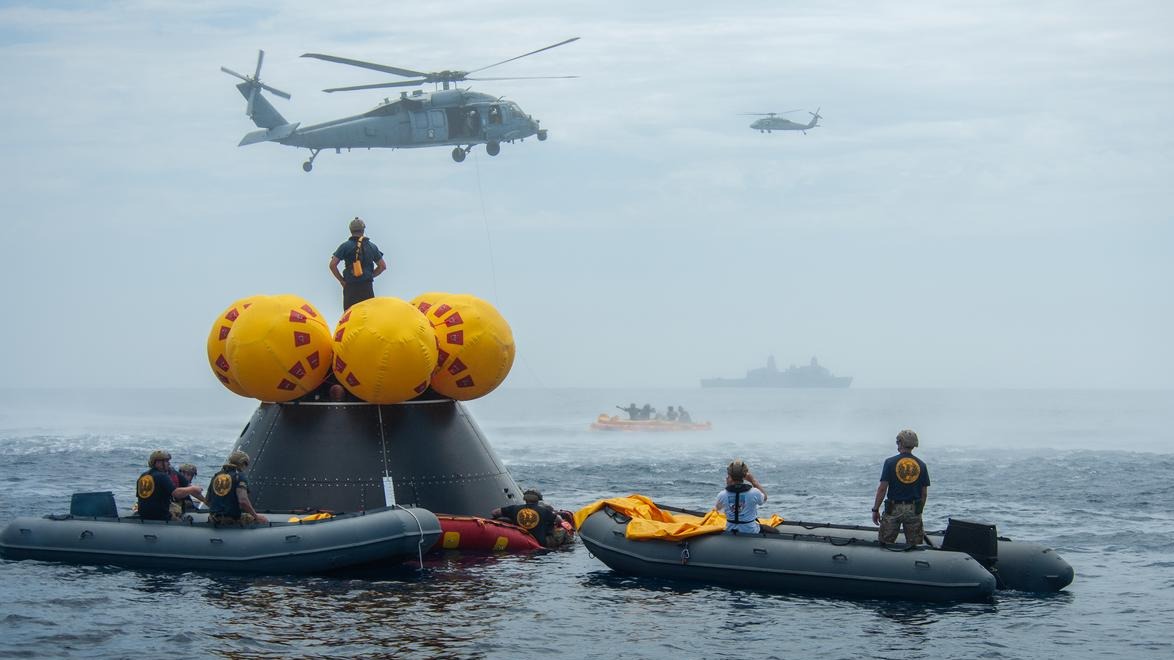
Then there is the massive task of getting all the Artemis 2 hardware ready. Most of it is already at KSC in various phases of testing and assembly — the Orion spacecraft and the pieces of the boosters supporting SLS, for example.
A stage adapter, which will connect Orion to the upper stage of the SLS, is being processed at NASA's Marshall Space Flight Center in Alabama. The crew visited Marshall in November and autographed the adapter, alongside technicians, to give a visual symbol of the teamwork between space and ground. (Ramsey said the thousands of individuals working on the ground deserve attention just as much as the crew does.)
"I think the only other major hardware element that hasn't been delivered is the [SLS] core stage," Ramsey added. The core stage is at NASA's Michoud Assembly Facility at New Orleans and is scheduled to ship to KSC by barge in 2024. Orion, he added, is "one of the big, big things we're tracking from a critical path perspective" to make sure it is ready for launch. The spacecraft is undergoing many ground tests to be completed by June 2024 (assuming the launch date holds) after which point Orion, the boosters and SLS will all be stacked on the mobile launcher at KSC's iconic Vehicle Assembly Building.
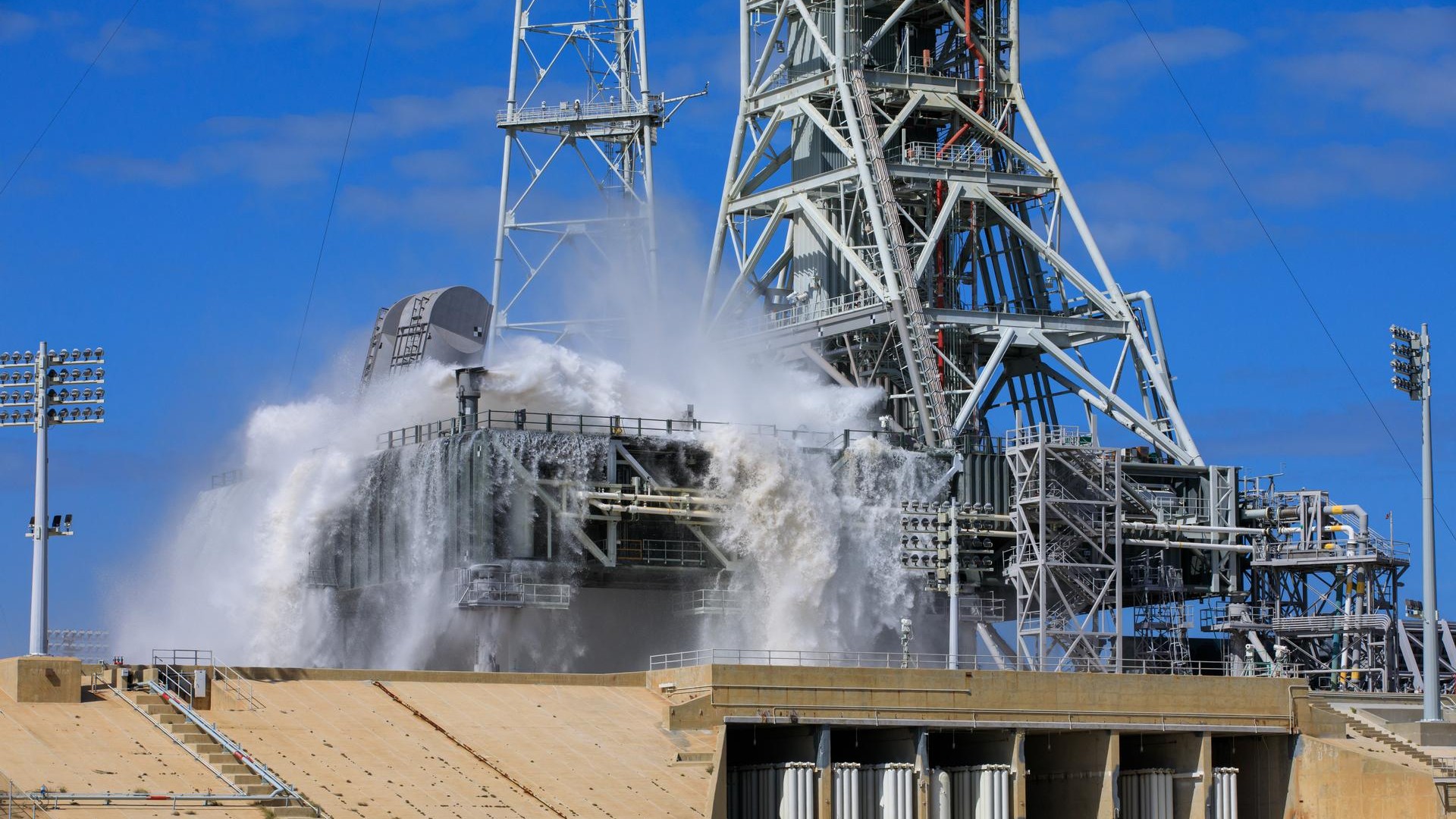
When asked about the historicity of Artemis 2, Ramsey paid tribute to several Apollo program astronauts who — despite being in their 80s or 90s now — are providing occasional feedback to ground teams and current astronauts. Ramsey singled out Apollo 17's Harrison Schmitt, the only geologist ever to walk on the moon, as being particularly involved with the Artemis program's geology planning.
As the Artemis program plans longer excursions on the moon than Apollo, and an eventual permanent base at the moon's south pole, "more emphasis has been placed on how we do science on the moon than with the Apollo astronauts," Ramsey said. Apollo astronauts have been providing "a lot of very good feedback to the lander designers, and the suit designers, on [matters like] it would be nice to have this tool, or if the suit can do this or that."
CSA's Tabarah, reflecting on Artemis 2's historic nature, said Canada is glad to be included in this first human moon mission of the program. Canada has been providing space robotics to NASA since the late 1970s, and has flown astronauts in space since 1984. It also committed a surge of new funding for Artemis and other off-Earth programs in the last five years. But Artemis 2 will mark the first time Canada has flown an astronaut so early in any human space program, Tabarah noted.
"This will have lasting effects for future missions, because this is the first crew that's actually going through this," Tabarah said of Artemis 2's training. The crew and ground teams, he added, "are creating all these processes in real time, and we're also — as an agency — we're participating in that. We're contributing to that. That's huge."







